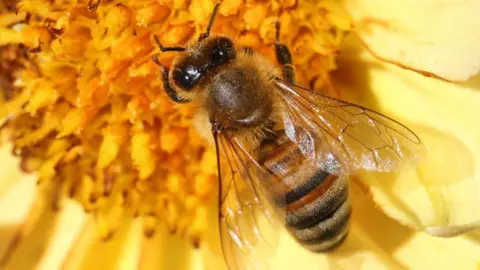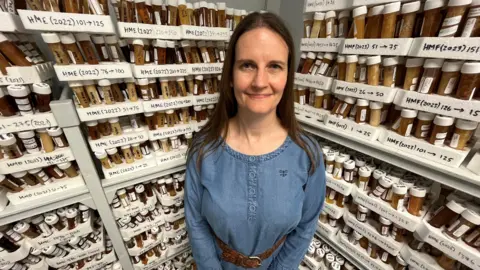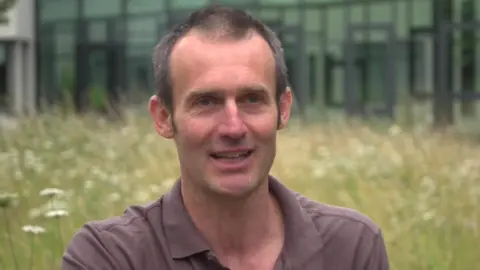Laboratory using bees to track climate change
 Getty Images
Getty ImagesA laboratory has been using bees to track how the environment is changing.
Scientists at the UK Centre for Ecology & Hydrology (UKCEH) in Wallingford, Oxfordshire, use pollen DNA in the insects' honey to measure the plant species present near hives across the south.
From that, they can infer environmental conditions and track how conditions are changing.
Ecological entomologist Dr Ben Woodcock said the bees were a "critical resource", allowing scientists to track large-scale changes in a relatively low-cost way.

The research is part of the National Honey Monitoring Scheme, which began in 2018.
Working with beekeepers across the country, the project has built up a honey archive to monitor long-term patterns and trends.
Dr Lindsay Newbold, a molecular microbial ecologist at UKCEH, said bees were "amazing".
"They're sort of like our remote samplers," she said.
"They go out, they explore the environment, they go and actually look for all the plants... then they bring it back to the hive and they make honey."
The honey is then analysed for pollen grains to help scientists build a picture of plant species present around the hives, which change with the environmental conditions.

Dr Woodcock said the use of bees in this way helped scientists to build a bigger picture of what was happening - something that, without the bees, would be "astronomically expensive".
"We get hundreds and hundreds of samples," he said.
"It's a partnership between us on the scientific side, who can do all the analysis, and the beekeepers."
He said that understanding how the climate is changing on a "large scale" was crucial to managing it.
"That's kind of what long-term monitoring is about," he said.
"It's an early warning about problems occurring, allowing you... to implement change."
You can follow BBC Oxfordshire on Facebook, X (Twitter), or Instagram.
